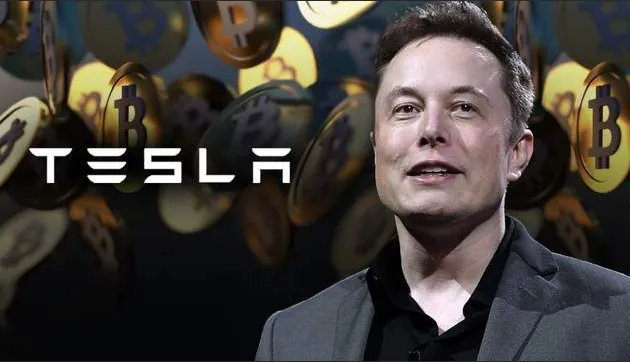Author | @arndxt_xo
Compiled | Odaily Planet Daily (@OdailyChina)
Translator | Dingdang (@XiaMiPP)

Significant pullbacks coincide with the quantitative easing (QE) cycle—when the Federal Reserve intends to extend the maturity of its held assets to lower long-term yields (this operation is known as "Operation Twist" as well as QE2/QE3).
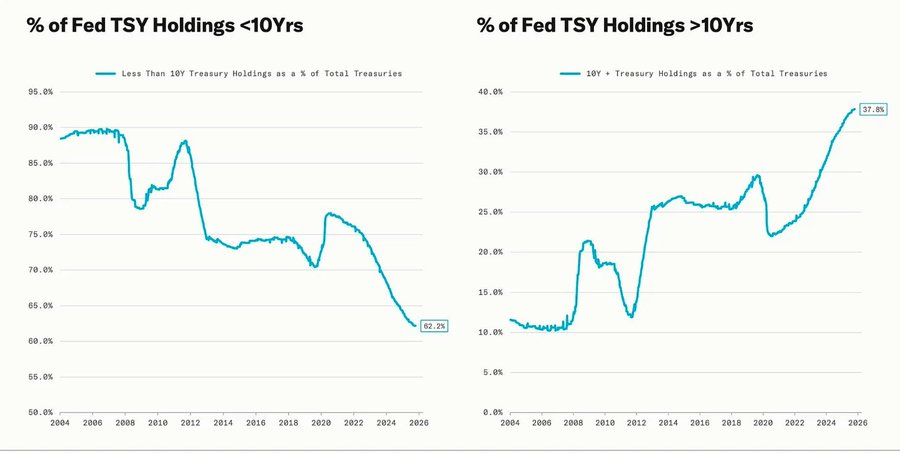
Powell's metaphor of "driving in the fog" is no longer limited to the Federal Reserve itself but has become a reflection of today's global economy. Whether policymakers, businesses, or investors, all are groping forward in an environment lacking clear visibility, relying only on liquidity reflexes and short-term incentive mechanisms.
The new policy regime presents three characteristics: limited visibility, weak confidence, and liquidity-driven distortions.
The Federal Reserve's "hawkish rate cut"
This 25 basis point "risk management" rate cut lowers the interest rate range to 3.75%–4.00%. Rather than being a loosening, it is more about "retaining options."

Due to two completely opposing opinions, Powell sent a clear signal to the market: "Slow down—visibility has disappeared."
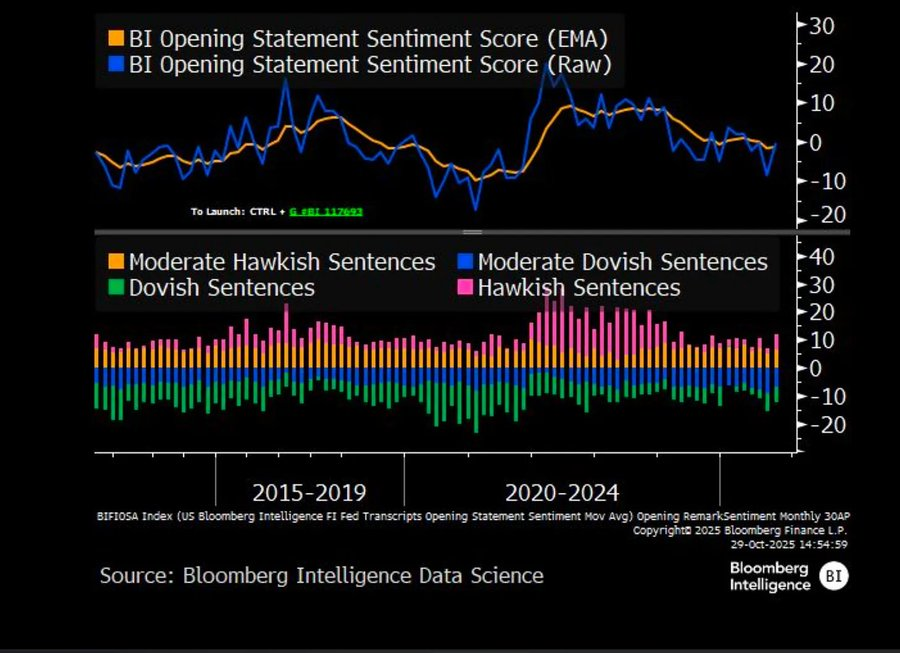
Due to the data blackout caused by the government shutdown, the Federal Reserve is almost "blindly opening." Powell's hints to traders are very clear: It is still uncertain whether rates can be announced in December. Rate cut expectations have quickly receded, the short-end yield curve is flattening, and the market is digesting the cautious shift from "data-driven" to "data missing."
2025: The "Hunger Games" of Liquidity
Repeated interventions by central banks have institutionalized speculative behavior. Now, what determines asset performance is not productivity, but liquidity itself—this structure leads to continuously inflated valuations while credit in the real economy weakens.
The discussion further expands to a sober examination of the current financial system: passive concentration, algorithmic reflexivity, and retail option frenzy—
- Passive funds and quantitative strategies dominate liquidity, volatility is determined by positions rather than fundamentals.
- Retail bullish option buying and gamma squeezes create synthetic price momentum in the "Meme sector," while institutional funds flock to increasingly narrow market leaders.
- The host refers to this phenomenon as the "financial version of the Hunger Games"—a system shaped by structural inequality and policy reflexivity, forcing small investors into speculative survivalism.
2026 Outlook: The Prosperity and Concerns of Capital Expenditure
The AI investment wave is pushing "Big Tech" into a post-cycle industrialization phase—currently driven by liquidity, but facing leverage-sensitive risks in the future.
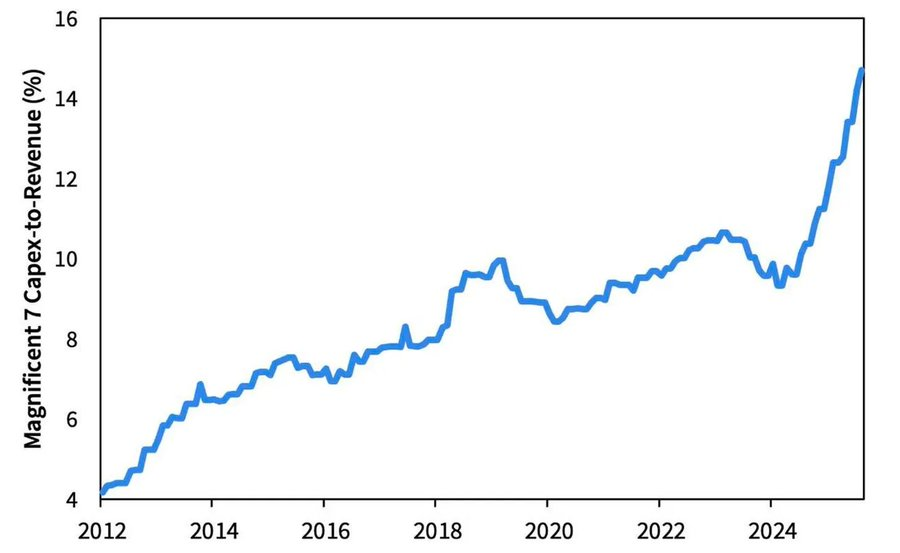
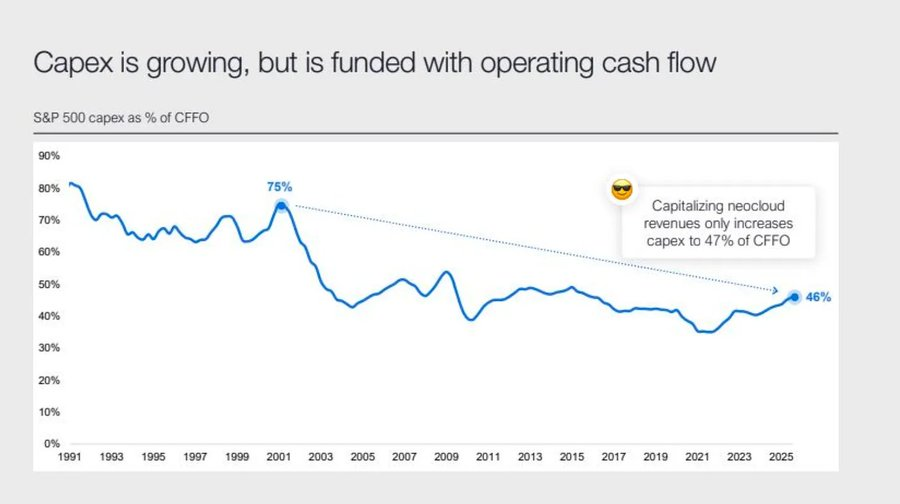
Corporate profits remain bright, but the underlying logic is changing: the once "light asset cash machines" are transforming into heavy capital infrastructure players.
- The expansion of AI and data centers initially relied on cash flow, but now shifts towards record debt financing—for example, Meta's oversubscribed $25 billion bond.
- This shift means profit margins are under pressure, depreciation is rising, and refinancing risks are increasing—laying the groundwork for the next credit cycle's turn.

Structural Commentary: Trust, Distribution, and Policy Cycles
From Powell's cautious tone to the final reflection, a clear main thread runs through: centralization of power and loss of trust.
Each policy rescue almost reinforces the largest market participants, further concentrating wealth and continuously weakening market integrity. The coordinated operations of the Federal Reserve and the Treasury—from quantitative tightening (QT) to short-term Treasury (Bill) purchases—exacerbate this trend: liquidity is abundant at the top of the pyramid, while ordinary households are suffocated by stagnant wages and rising debt.
The most critical macro risk today is no longer inflation, but institutional fatigue. The market still appears prosperous on the surface, but trust in "fairness and transparency" is eroding—this is the true systemic vulnerability of the 2020s.
Macro Weekly | Updated November 2, 2025
This issue covers the following content:
- This week's macro events
- Bitcoin heat indicators
- Market overview
- Key economic indicators
This Week's Macro Events
Last week

Next week
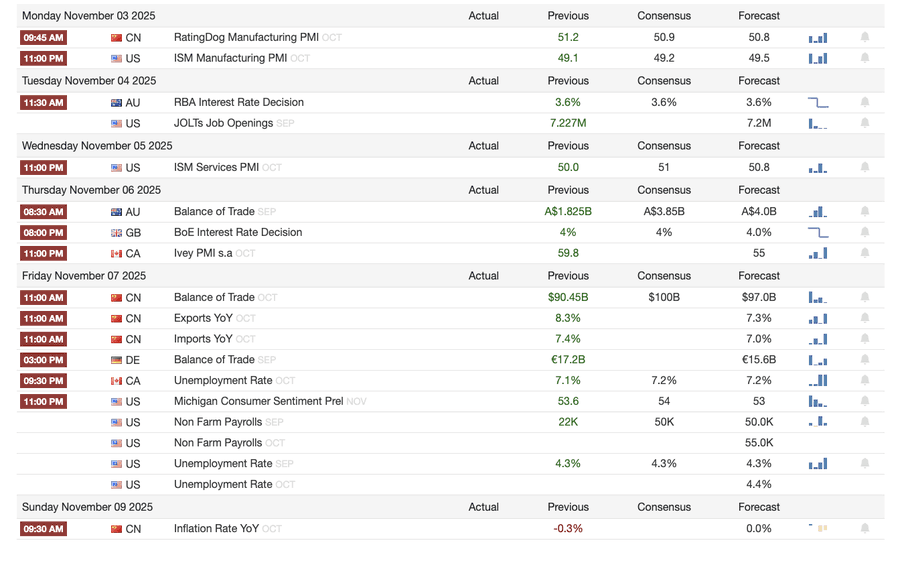

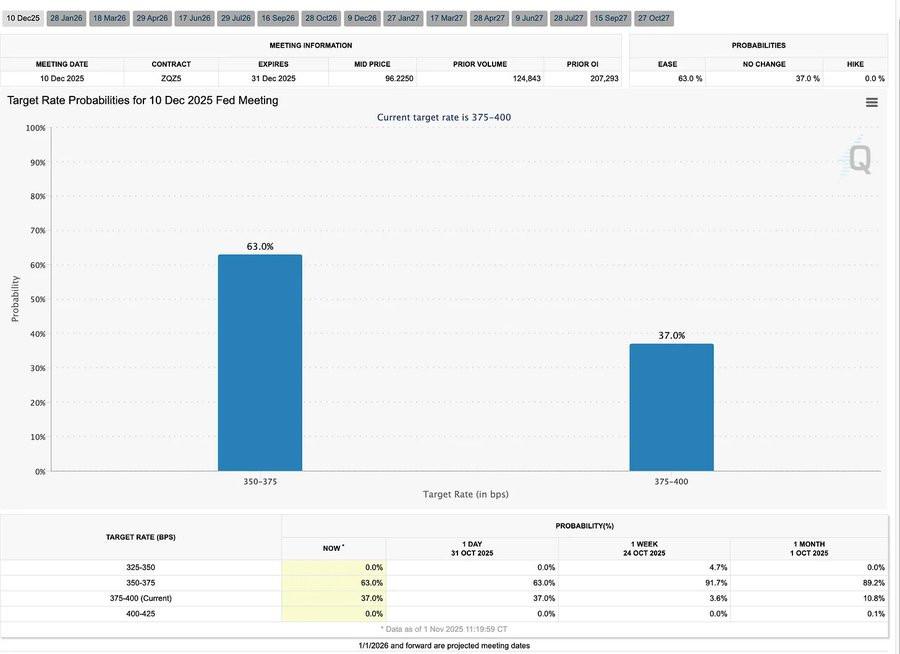
Bitcoin Heat Indicators
Market Events and Institutional Dynamics
- Mt. Gox extends repayment deadline to 2026, with approximately $4 billion in Bitcoin still frozen.
- Bitwise Solana ETF reaches a management scale of $338.9 million in its first week, setting a record, even as the SEC remains in a review stalemate.
- ConsenSys plans to IPO in 2026, with underwriters including JPMorgan and Goldman Sachs, targeting a valuation of $7 billion.
- Trump Media Group launches Truth Predict—the first prediction market in collaboration with a social media platform and Crypto.com.
Financial and Payment Infrastructure Upgrades
- Mastercard acquires crypto infrastructure startup Zerohash for up to $2 billion.
- Western Union plans to launch the stablecoin USDPT on Solana in 2026 and has registered the WUUSD trademark.
- Citibank and Coinbase team up to launch an institutional-grade 24/7 stablecoin payment network.
- Circle launches the Arc public testnet, attracting participation from over 100 institutions, including BlackRock and Visa.
Ecosystem and Platform Expansion
- MetaMask launches multi-chain accounts, supporting EVM, Solana, and soon Bitcoin support.
Global and Regional Dynamics
- Kyrgyzstan launches a stablecoin backed by BNB; at the same time, Trump pardons CZ, paving the way for Binance's return to the U.S. market.
- U.S. SOL spot ETF (excluding seed funding) sees inflows of $199.2 million.
- Japan launches a fully compliant yen stablecoin JPYC, aiming for an issuance scale of $65–70 billion by 2028.
- Ant Group registers the "ANTCOIN" trademark, quietly returning to the Hong Kong stablecoin race.
- AWS and Microsoft cloud services disruptions cause market chaos, with conflicting statements from both sides.
- JPMorgan's Kinexys blockchain completes its first tokenized private equity fund transaction, further promoting institutional adoption.
- Tether becomes one of the major holders of U.S. Treasury bonds, with holdings reaching $135 billion and annualized returns exceeding $10 billion.
- Metaplanet launches a stock buyback plan to address declining net assets.
- The trading heat of privacy assets rises, with ZEC prices breaking the 2021 high, but this week's gains still lag behind DASH.
- Sharplink deploys $200 million ETH on Linea to earn DeFi yields.
- With sports betting becoming a hot sector, Polymarket plans to officially launch products in the U.S. by the end of November.
- Securitize announces plans to go public through a $1.25 billion SPAC merger.
- Visa adds payment support for four stablecoins and four chains.
- 21Shares submits an application for the Hyperliquid ETF, with more crypto funds entering the market.
- KRWQ becomes the first Korean won stablecoin issued on the Base chain.
Market Overview
The global economy is transitioning from inflation risk to confidence risk—future stability will depend on the clarity of policies rather than liquidity.
Global monetary policy is entering a phase of limited visibility. In the U.S., the FOMC has lowered the interest rate by 25 basis points to 3.75%–4.00%, revealing an expansion of internal divisions. Powell hinted that further easing in the future is "not set in stone." The ongoing government shutdown has hindered decision-makers from obtaining key data, exacerbating the risk of policy misjudgment. Weakening consumer confidence and a slowdown in real estate indicate that market sentiment, rather than stimulus measures, is influencing the direction of the economy's "soft landing."
Among G10 countries: the Bank of Canada completed its final rate cut, the European Central Bank maintained the rate at 2.00%, and the Bank of Japan cautiously paused. The common challenge faced by all parties is how to curb economic growth amid persistent service sector inflation. Meanwhile, China's PMI has once again fallen back into contraction territory, indicating weak recovery, sluggish domestic demand, and signs of policy fatigue.
Compounding political risks, the U.S. government shutdown threatens the normal operation of welfare programs and may delay the release of key data, thereby undermining confidence in fiscal governance. The bond market has already begun to digest expectations of declining yields and slowing economic growth, but the real risk lies in the collapse of institutional feedback mechanisms—data delays, policy indecision, and declining public trust intertwine, ultimately leading to a crisis.
Key Economic Indicators
U.S. Inflation: Mild Recovery, Clearer Path
The rise in inflation is primarily supply-driven rather than demand-driven. Core pressures remain controlled, and weakening employment momentum gives the Federal Reserve room to continue cutting rates without triggering an inflation rebound.
- September inflation rose 3.0% year-on-year and 0.3% month-on-month, the fastest since January this year, but still below expectations, reinforcing the "soft landing" narrative.
- Core CPI, excluding food and energy, rose 3.0% year-on-year and 0.2% month-on-month, indicating stable price fundamentals.
- Food prices increased by 2.7%, with meat prices rising 8.5%, affected by labor shortages in agriculture due to immigration restrictions.
- Utility costs rose significantly: electricity +5.1%, natural gas +11.7%, primarily driven by energy consumption from AI data centers—new drivers of inflation.
- Service sector inflation fell to 3.6%, the lowest since 2021, indicating that cooling labor markets are alleviating wage pressures.
- Market reactions are positive: stock markets rose, interest rate futures strengthened rate cut expectations, and bond yields remained stable overall.
U.S. Demographics: Critical Turning Point
Net immigration has turned negative, posing challenges to economic growth, labor supply, and innovation capacity.
The U.S. may face its first population decline in a century. Although the number of births still exceeds deaths, negative net immigration offsets a projected population increase of 3 million in 2024. The U.S. is experiencing a demographic reversal, not due to declining birth rates but due to a sharp reduction in immigration caused by policy changes. Short-term impacts include labor shortages and rising wages; long-term risks focus on fiscal pressure and slowed innovation. Unless this trend is reversed, the U.S. may repeat Japan's aging scenario—slowing economic growth, rising costs, and facing structural productivity challenges.
According to AEI forecasts, net migration in 2025 is projected to be -525,000, marking the first negative value in modern history.
- Pew Research Center data shows that the foreign-born population will decrease by 1.5 million in the first half of 2025, primarily due to deportations and voluntary departures.
- Labor growth is stagnating, with significant shortages and wage pressures in agriculture, construction, and healthcare sectors.
- 28% of American youth are immigrants or children of immigrants; if immigration ceases, the population under 18 may decline by 14% by 2035, exacerbating pension and healthcare burdens.
- 27% of doctors and 22% of nursing assistants are immigrants; if supply declines, automation and robotization in the healthcare sector may accelerate.
- Innovation risk: immigrants have contributed to 38% of Nobel Prizes and about 50% of billion-dollar startups; if this trend reverses, the U.S. innovation engine will be damaged.
Japan's Export Recovery: Resurgence Under Tariff Shadows
Despite being dragged down by U.S. tariffs, Japan's exports have rebounded. In September, exports grew by 4.2% year-on-year, marking the first positive growth since April, primarily driven by recovering demand from Asia and Europe.
After several months of contraction, Japan's exports have returned to growth, with a year-on-year increase of 4.2% in September, the largest increase since March. This rebound highlights that despite new trade frictions with the U.S., regional demand remains strong, and supply chains have adjusted accordingly.
Japan's trade performance indicates that although the U.S. has imposed tariffs on automobiles (its core export category), external demand from Asia and Europe has stabilized. The rebound in imports suggests a mild recovery in domestic demand, driven by a weaker yen and a restocking cycle.
Outlook:
- Exports are expected to gradually recover, driven by the normalization of internal supply chains in Asia and energy prices.
- Ongoing U.S. protectionism remains the main obstacle to maintaining export momentum in 2026.
Related reading: "Why is the upcoming quantitative easing a bubble-making machine?"
免责声明:本文章仅代表作者个人观点,不代表本平台的立场和观点。本文章仅供信息分享,不构成对任何人的任何投资建议。用户与作者之间的任何争议,与本平台无关。如网页中刊载的文章或图片涉及侵权,请提供相关的权利证明和身份证明发送邮件到support@aicoin.com,本平台相关工作人员将会进行核查。
